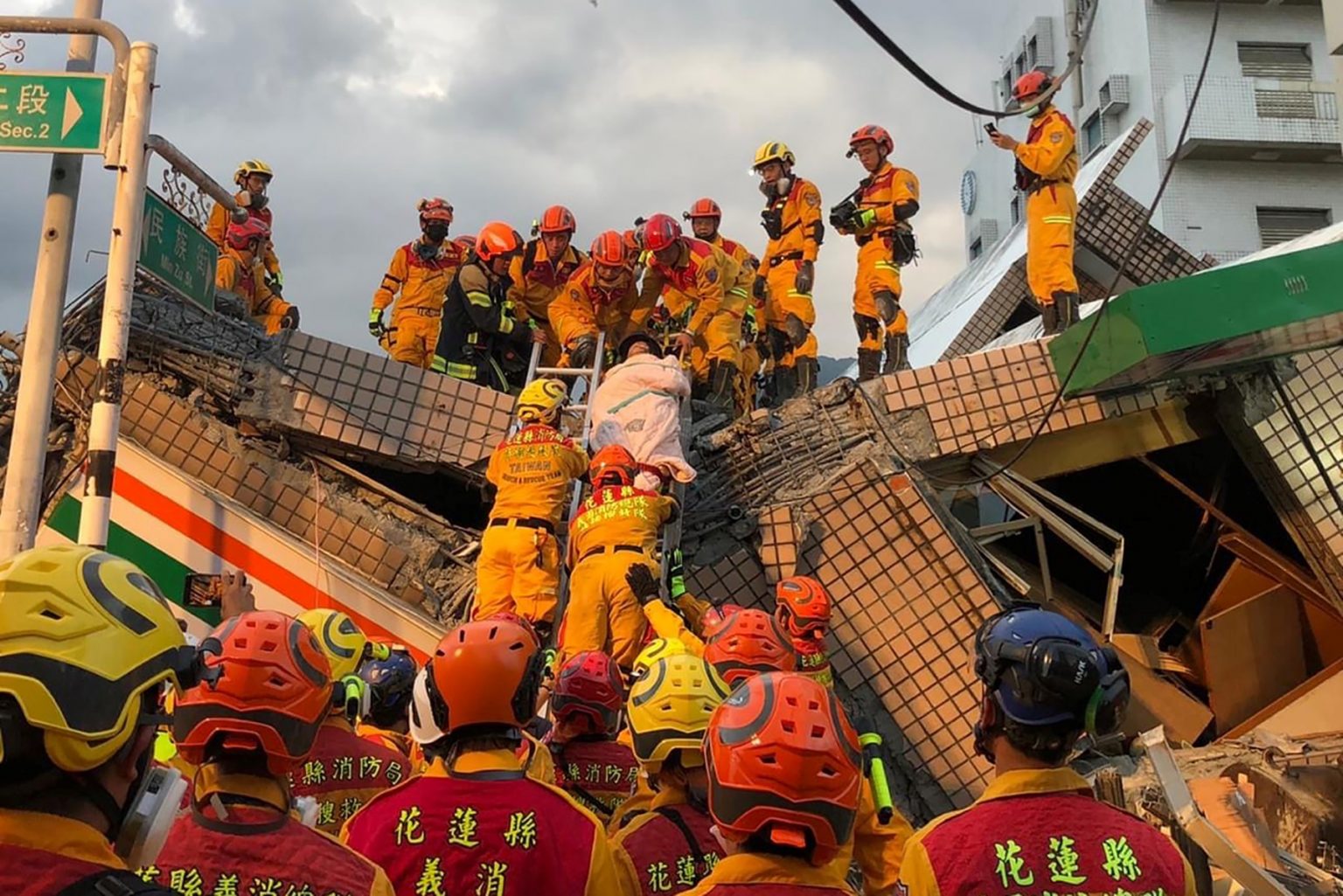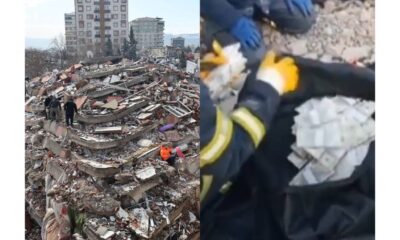Foreign
Strong quake strikes eastern Taiwan, buildings, roads damaged

A strong earthquake struck southeastern Taiwan on Sunday, killing at least one person, bringing down a handful of buildings and tearing up roads – but forecasters said the threat of a regional tsunami had passed.
The quake hit at 2:44 pm (0644 GMT) about 50 kilometres (30 miles) North of the city of Taitung at a depth of 10 kilometres, the United States Geological Survey said.
Its initial strength was given as magnitude 7.2 but the USGS later downgraded it to 6.9. Multiple aftershocks were recorded.
Japan’s Meteorological Agency and the Pacific Tsunami Warning Centre issued tsunami advisories shortly after the quake, but both later said there was no longer a threat of high waves.
Taiwan’s National Fire Agency said one person was killed by falling machinery at a cement factory in the town of Yuli, which lay close to the epicentre.
The health ministry said 79 people either sought medical treatment or were sent to hospital.
At least, three buildings collapsed in Yuli, including one that had a seven to eleven convenience store on the ground floor.
Video footage posted by Taiwan’s Central News Agency showed panicked residents running towards the building, which sent up a thick cloud of dust as it caved in.
The Hualien fire department said four people who were trapped in the building were rescued.
Two other buildings in the town collapsed but no one was inside them, the department added. Two nearby bridges collapsed and two others were damaged.
The Taiwan Railways Administration said a train derailed at Dongli station in Hualien after it was hit by concrete from an overhead canopy that came loose during the quake.
The TRA said the 20 passengers on board were evacuated and no injuries were reported.
Shaking was also felt in the capital Taipei and the southwestern city of Kaohsiung, with residents posting videos of chandeliers and paintings swaying on social media.
Taiwan’s President Tsai Ing-wen urged people to be vigilant for further aftershocks.
“Water and electricity supplies in some areas are also affected by the earthquake,” she wrote on Facebook. “The related disaster relief work is in full swing.”
Many expressed the kind of resilience that comes with living on an island that frequently experiences earthquakes.
In one video posted online, a man said he was trapped on a bridge where the road at either end had collapsed into a twisted mess of tarmac and concrete.
“This is troublesome,” he could be heard saying. “The whole bridge is broken”.
Ou Chin Te shared footage from the swimming pool on the 60th floor of The One – a skyscraper in Kaohsiung and Taiwan’s fourth-highest building.
The tremors had turned the pool into a wobbly mass of waves.
“When the quake struck the lifeguard shouted to get out and we all left the pool,” he told AFP.
“Everyone was really scared. I was so frightened at the moment that I didn’t really know what to do.”
A 6.6-magnitude quake hit the same region on Saturday and there have been multiple tremors since, with minimal damage in what is a mountainous and sparsely populated rural region.
But Sunday’s quake was stronger.
The China Earthquake Network Centre said tremors were felt in coastal areas including Fujian, Guangdong, Jiangsu and Shanghai.
Taiwan sits on the “Ring of Fire”, an arc of intense seismic activity that stretches through South-East Asia and across the Pacific basin.
Most of Taiwan’s population lives on the flat western coast and in the capital Taipei.
The scenic eastern coast is more remote and less populated but a major tourist draw.
There are few international tourists in Taiwan these days because the island maintains mandatory COVID quarantine for most arrivals.
Taiwan is regularly hit by quakes and most cause minimal damage but the island also has a long history of deadly tremors.
Hualien, a tourist hotspot, was struck by a 6.4-magnitude earthquake in 2018 that killed 17 people and injured nearly 300.
In September 1999, a 7.6-magnitude quake killed around 2,400 people in the deadliest natural disaster in the island’s history.








